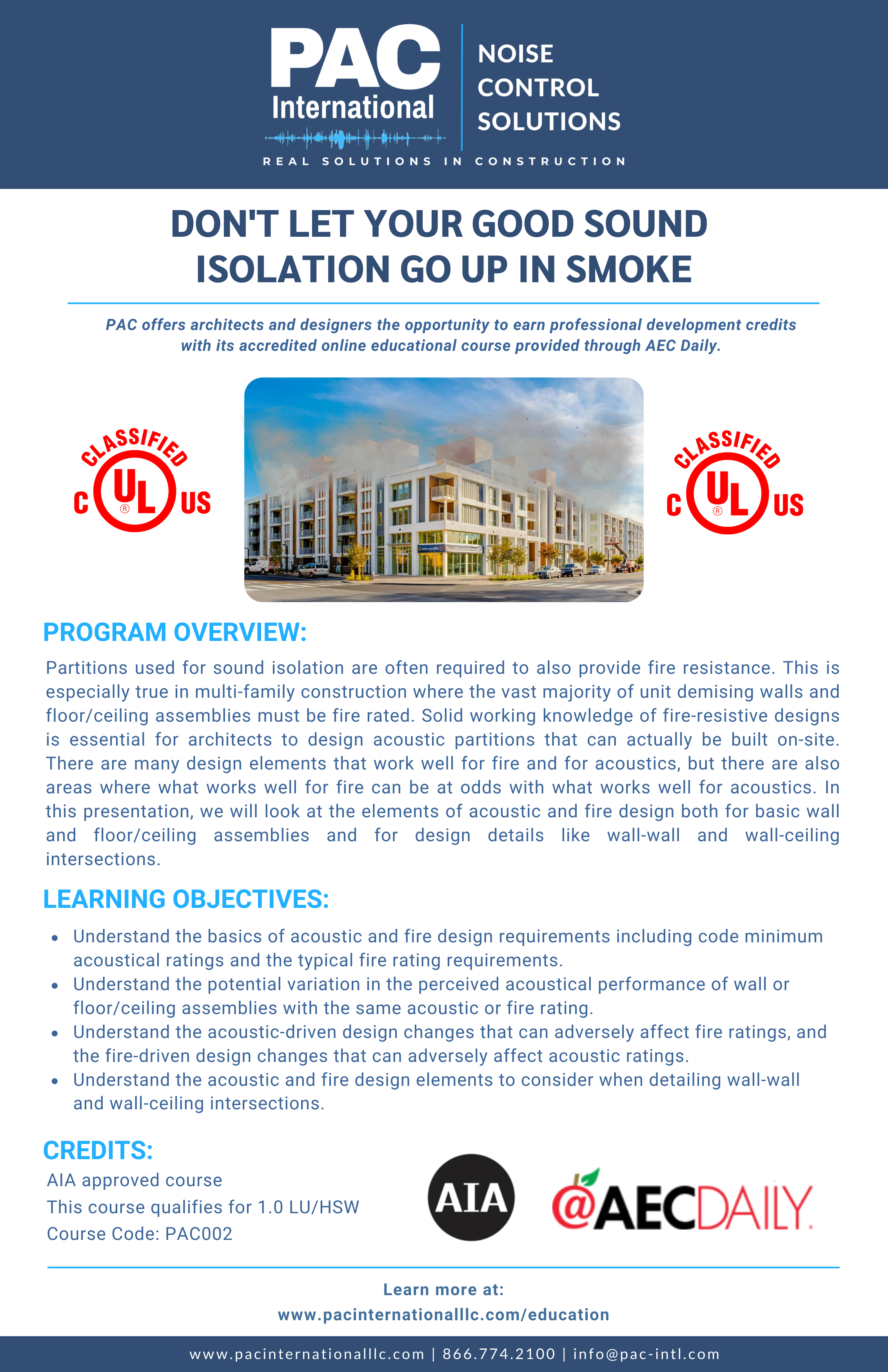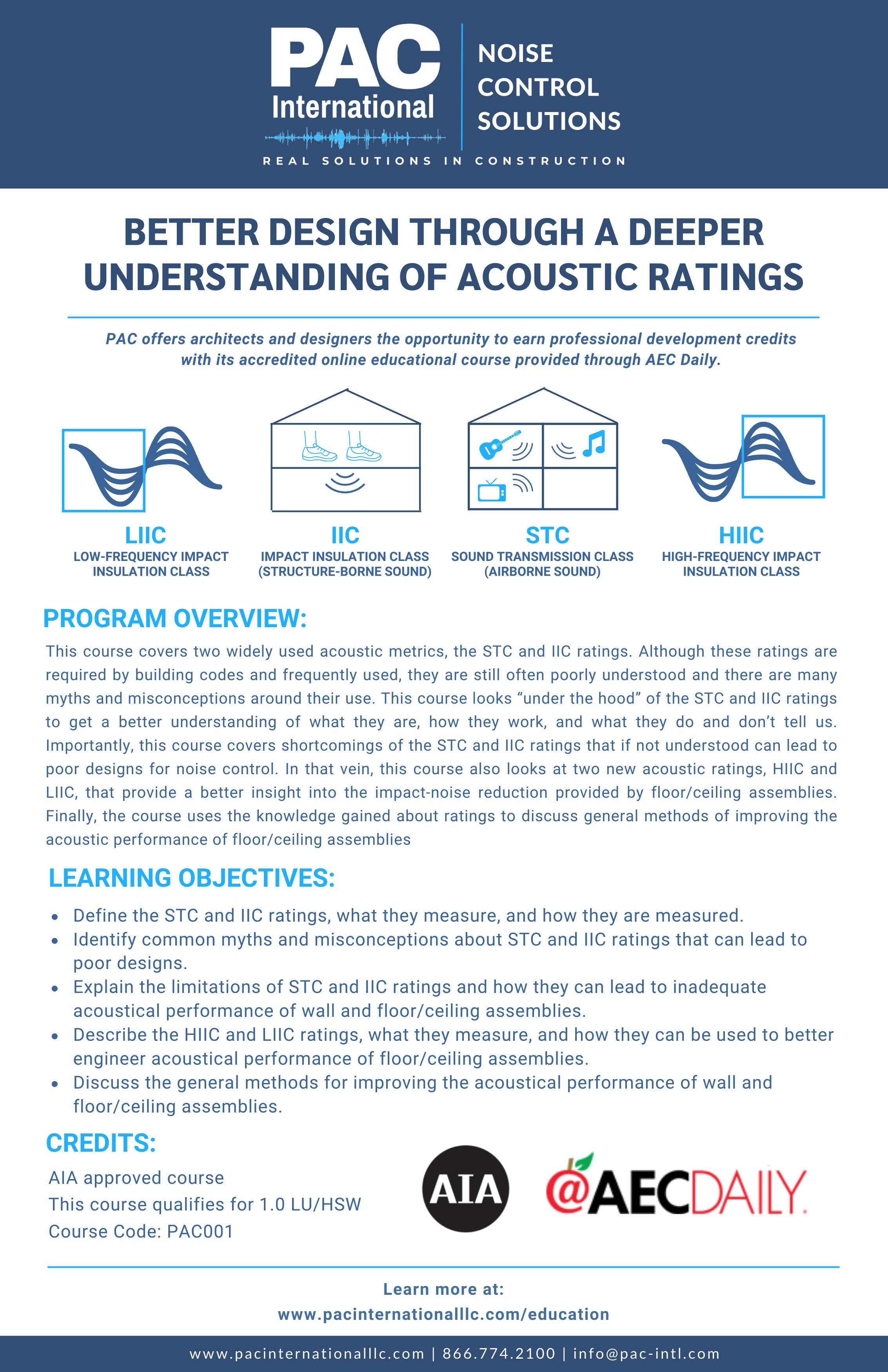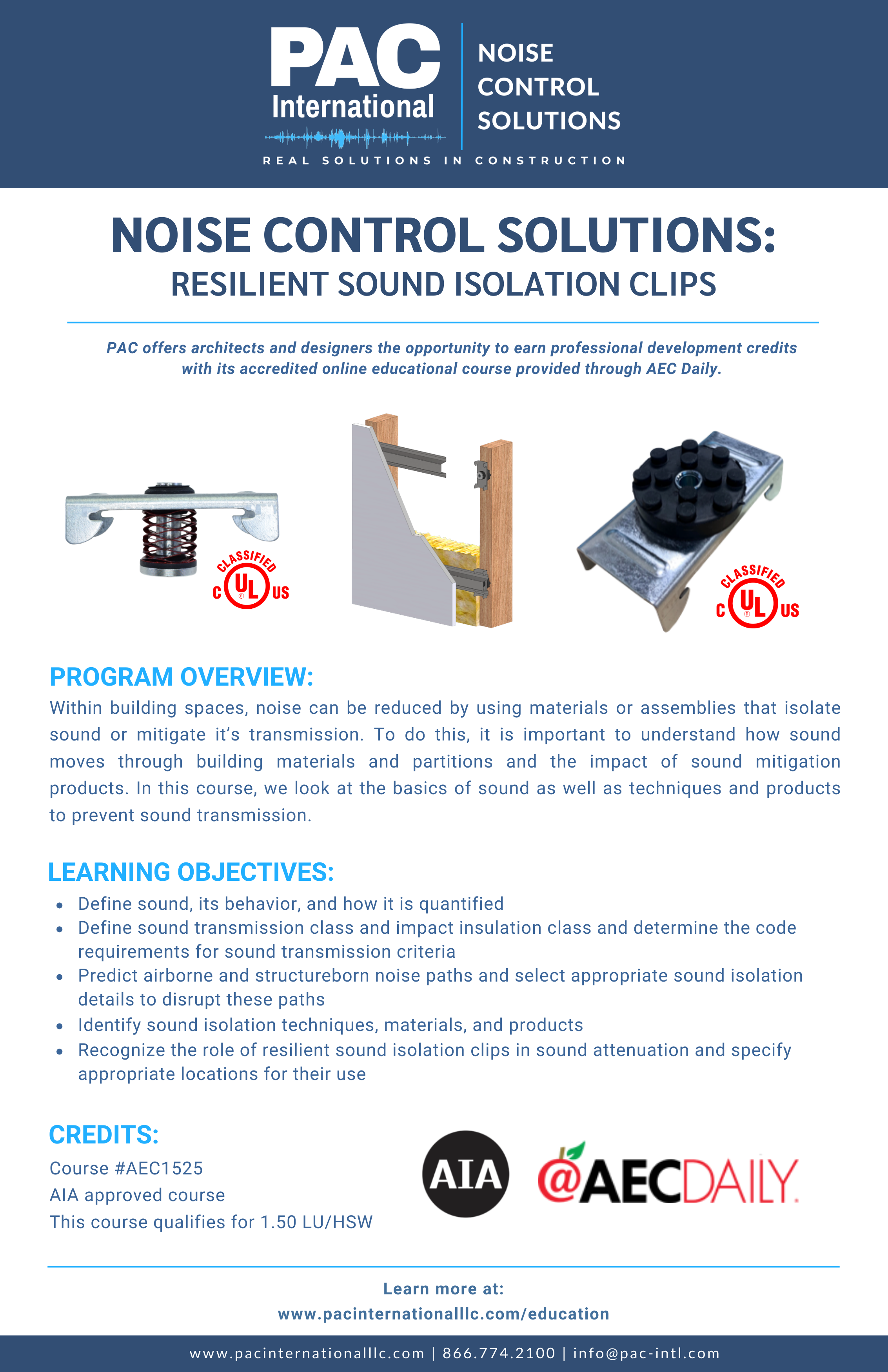
TAKE ON OF PAC’S CONTINUING EDUCATION COURSES TODAY
Elevate your professional expertise with our comprehensive AIA-approved continuing education courses, designed to accommodate your unique learning preferences. Our offerings include both self-paced modules and live presentations, ensuring flexibility to suit your schedule. Attendees, regardless of their chosen format, will have the opportunity to earn one highly regarded LU (Learning Unit) credit. These courses are meticulously crafted to enhance your knowledge and skills, empowering you to excel in your field while tailoring your learning experience to your needs. Explore our versatile educational options and unlock your potential with us.
DON’T LET YOUR GOOD SOUND ISOLATION GO UP IN SMOKE!.
Description & Learning Objectives:
Partitions used for sound isolation are often required to also provide fire resistance. This is especially true in multi-family construction where the vast majority of unit demising walls and floor/ceiling assemblies must be fire-rated. Solid working knowledge of fire-resistive designs is essential for architects to design acoustic partitions that can actually be built on-site. There are many design elements that work well for fire and for acoustics, but there are also areas where what works well for fire can be at odds with what works well for acoustics. In this presentation, we will look at the elements of acoustic and fire design both for basic wall and floor/ceiling assemblies and for design details like wall-wall and wall-ceiling intersections
- Understand the basics of acoustic and fire design requirements including code minimum acoustical ratings and the typical fire rating requirements.
- Understand the potential variation in the perceived acoustical performance of wall or floor/ceiling assemblies with the same acoustic or fire rating.
- Understand the acoustic-driven design changes that can adversely affect fire ratings and the fire-driven design changes that can adversely affect acoustic ratings.
- Understand the acoustic and fire design elements to consider when detailing wall-wall and wall-ceiling intersections.
This course is offered as an online class through AEC Daily or a scheduled webinar. (Online: Scheduled Session)

BETTER DESIGN THROUGH A DEEPER UNDERSTANDING OF ACOUSTIC RATINGS
Description & Learning Objectives:
This course covers two widely used acoustic metrics, the STC and IIC ratings. Although these ratings are required by building codes and frequently used, they are still often poorly understood and there are many myths and misconceptions around their use. This course looks “under the hood” of the STC and IIC ratings to get a better understanding of what they are, how they work, and what they do and don’t tell us. Importantly, this course covers shortcomings of the STC and IIC ratings that if not understood can lead to poor designs for noise control. In that vein, this course also looks at two new acoustic ratings, HIIC and LIIC, that provide a better insight into the impact-noise reduction provided by floor/ceiling assemblies. Finally, the course uses the knowledge gained about ratings to discuss general methods of improving the acoustic performance of floor/ceiling assemblies.
- Define the STC and IIC ratings, what they measure, and how they are measured.
- Identify common myths and misconceptions about STC and IIC ratings that can lead to poor designs.
- Explain the limitations of STC and IIC ratings and how they can lead to inadequate acoustical performance of wall and floor/ceiling assemblies.
- Describe the HIIC and LIIC ratings, what they measure, and how they can be used to better engineer acoustical performance of floor/ceiling assemblies.
- Discuss the general methods for improving the acoustical performance of wall and floor/ceiling assemblies.
This course is offered as an online class through AEC Daily or a scheduled webinar. (Online: Scheduled Session)

NOISE CONTROL SOLUTIONS:
Resilient Sound Isolation Clips
Description & Learning Objectives:
Within building spaces, noise can be reduced by using materials or assemblies that isolate sound or mitigate its transmission. To do this, it is important to understand how sound moves through building materials and partitions and the impact of sound mitigation products. In this course, we look at the basics of sound as well as techniques and products to prevent sound transmission.
- Define sound, its behavior, and how it is quantified
- Define sound transmission class and impact insulation class and determine the code requirements for sound transmission criteria
- Predict airborne and structure born noise paths and select appropriate sound isolation details to disrupt these paths
- Identify sound isolation techniques, materials, and products
- Recognize the role of resilient sound isolation clips in sound attenuation and specify appropriate locations for their use
This course is offered as an online class through AEC Daily or a scheduled webinar. (Online: Self Paced)

